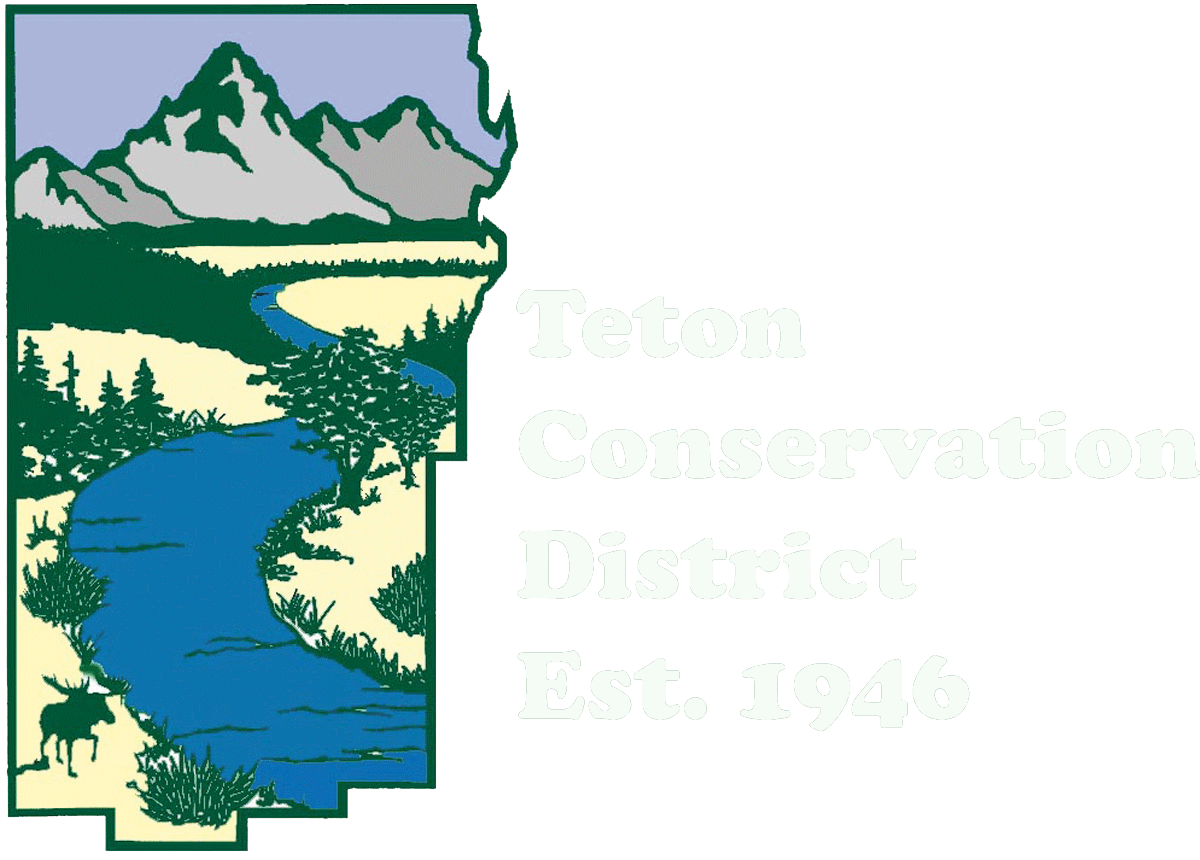By Carlin Girard and Emily Smith
At Teton Conservation District, we like water. And behind the scenes, we work with water data to help forecast water issues and assist people in mitigating problems.
The analysis we present here is intended to help people visualize our current ‘water year’ from both a snowpack and water flow perspective. The first plot illustrates the snow water equivalent, a measurement of water in the snowpack. The second plot depicts Snake River discharge, a measurement of water flow. Both plots are shown with ‘water year’ on the x-axis (horizontal axis), which starts October 1st, when snow begins to accumulate in the mountains, and ends the following September 30th. A water-year is named for the year it ends on. Of note, we are in the midst of a drought year, and thus, we are presenting this year’s water data compared to 2016, which was a comparable water year, and 2001, which was a severe drought year. The plots also show median conditions, which represents ‘normal’ conditions.
Pro tip: Click on the plots above to see them full screen.
Starting in late summer of 2020, things got really dry – as in the driest soil moisture conditions in 10 years. And, as is shown in the Snowpack plot, the 2021 water year in the Upper Snake Basin has been at or below the median snow water equivalent. Over the month of May, typically one of our wettest months, snow water equivalent dropped from 64% to 57% of median, furthering our drought scenario. Now, an unseasonably warm and dry spring has caused a steep decline in the snowpack. The 2021 water year has been tracking close to the 2016 snowpack and discharge, although we have slightly less snowpack and have had a slightly higher peak discharge. As one of the driest winters on record, 2001 is presented as an example of extreme drought, which we have stayed above in both snowpack and discharge. The Green Knoll fire in Wilson was in July of 2001.
We present discharge measurements taken at the USGS Snake River monitoring station south of Jackson at Swinging Bridge (aka Snake River below Flat Creek) because it represents the water leaving Jackson Hole pretty well. Our guess is that the Snake River has already reached its peak flow (Glory Bowl is melted out) and it will be followed by a relatively rapid decline in discharge, especially considering that near-term temperature forecasts don’t show a cooling pattern. We eked out a decent whitewater peak, given the water year we had, but if our intuitions are correct, it’s time to start tying flies, because water levels will be dropping fast! Keep your eye on Rendezvous Bowl at Jackson Hole Mountain Resort – when it’s free of snow, the Snake is usually clear and beginning to fish well. And enjoy it, because according to the Bureau of Reclamation, they will be releasing higher than normal flows this summer from Jackson Lake, which can really hamper mainstem summer fishing conditions.
We are fortunate to have a substantial amount of surface and groundwater available even in a drought year, however, well owners, irrigators, firefighters, and anglers will need to pay special attention this summer and fall. If water supply has been an issue for you in the past, this year could present similar challenges.
Don’t hesitate to give us a call or an email if you observe abnormal water conditions this year, we are always interested.
Other resources:
Click here to check out NRCS snowpack data.
Click here to look at USGS Swinging Bridge Snake River data (multiple discharge readings per day and other data available).

